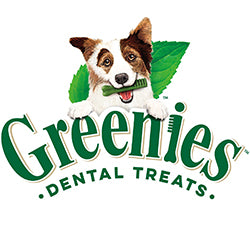
How to deal with pet allergies in adults
Pet allergies are a common condition affecting many adults worldwide. Whether you've always had a pet allergy or developed one later in life, navigating daily life with these allergies can be a challenge, especially if you're an animal lover. The good news is that with a combination of medical treatments and practical approaches, you can significantly reduce your symptoms and live harmoniously with your furry friends. In this blog, we will talk about understanding pet allergies and outline strategies for managing them effectively.
Understanding Pet Allergies
Before diving into the solutions, it's crucial to comprehend what causes pet allergies. Contrary to popular belief, it’s not just the pet fur that causes allergies. The main culprits are proteins found in a dog or cat’s skin cells, urine, and saliva. When these proteins are airborne, they can be inhaled by those nearby, leading to allergic reactions.
Symptoms can vary from very little to severe and include:
Sneezing
Runny or stuffy nose
Watery, red, or itchy eyes
Skin rashes
Asthmatic symptoms such as coughing, wheezing, or shortness of breath
Strategies to Manage Pet Allergies
1. Consult an Allergist:
Before making any decisions, visit an allergist to confirm that your symptoms are genuinely due to a pet allergy. An allergist can perform tests and give you insights into the severity of your allergies and appropriate treatments.
2. Create an Allergy-Free Zone:
Designate a space in your home, like a bedroom or study, where pets are strictly not allowed. This gives you a safe refuge where allergens are significantly reduced.
3. Clean, Clean, and Clean Some More:
The importance of cleanliness cannot be stressed enough. Invest in a high-quality cleaner with a HEPA (High-Efficiency Particulate Air) filter. Regularly vacuum carpets, rugs, and upholstery. Additionally, wash your pet’s bedding, toys, and other belongings frequently.
4. Consider Air Purifiers:
Air purifiers, especially those with HEPA filters, can help reduce airborne pet allergens. Place one in frequently used rooms and, importantly, in your allergy-free zone.
5. Opt for Hard Flooring:
Carpets can trap pet dander. If possible, replace carpets with hard flooring such as tile, wood, or laminate, which are easier to clean and don't harbor allergens as much.
6. Groom Your Pets Regularly:
By regularly grooming and bathing your pets, you can reduce the amount of loose fur and dander. If you're allergic, consider having someone else do this task or wear a mask and gloves when grooming.
7. Wash Your Hands and Change Clothes:
After handling or playing with your pet, wash your hands immediately. If you've been cuddling or have pet hair on you, consider changing into fresh clothes.
8. Invest in Hypoallergenic Pets:
While no pet is entirely hypoallergenic, some breeds are known to make fewer allergens than others. Research and consider opting for such breeds if you're thinking of getting a new pet.
9. Over-the-Counter Medications:
Many antihistamines and decongestants are available over-the-counter and can be effective in treating mild allergy symptoms.
10. Allergy Shots (Immunotherapy):
If your allergies are severe, your allergist might recommend allergy shots. These injections gradually desensitize you to allergens, thereby reducing symptoms over time.
11. Natural Remedies:
Some individuals find relief through natural remedies such as quercetin, stinging nettle, and butterbur. However, always consult with a healthcare professional before trying new supplements.
12. Keep Your Pet Outdoors (if feasible and humane):
While this isn't ideal for all pets or living situations, allowing your pet to live outside can reduce the allergens inside your home. Ensure that they have a comfortable and safe environment.
Embracing the Challenge
Living with pet allergies as an adult doesn't mean giving up on the joy pets bring into our lives. With proper strategies, you can manage your symptoms and continue to have a loving relationship with your furry friends. The key lies in understanding the nature of your allergy, adopting a combination of preventive measures, and seeking appropriate medical advice.
Lastly, it's crucial to remember that each individual's experience with pet allergies is unique. What works for one person might not work for another. It’s a journey of understanding your body, recognizing triggers, and finding solutions tailored to your needs.
Embrace the challenge with a proactive approach and a positive mindset. With the right strategies in place, both you and your pet can coexist happily and healthily.
Understanding Pet Allergies
Before diving into the solutions, it's crucial to comprehend what causes pet allergies. Contrary to popular belief, it’s not just the pet fur that causes allergies. The main culprits are proteins found in a dog or cat’s skin cells, urine, and saliva. When these proteins are airborne, they can be inhaled by those nearby, leading to allergic reactions.
Symptoms can vary from very little to severe and include:
Sneezing
Runny or stuffy nose
Watery, red, or itchy eyes
Skin rashes
Asthmatic symptoms such as coughing, wheezing, or shortness of breath
Strategies to Manage Pet Allergies
1. Consult an Allergist:
Before making any decisions, visit an allergist to confirm that your symptoms are genuinely due to a pet allergy. An allergist can perform tests and give you insights into the severity of your allergies and appropriate treatments.
2. Create an Allergy-Free Zone:
Designate a space in your home, like a bedroom or study, where pets are strictly not allowed. This gives you a safe refuge where allergens are significantly reduced.
3. Clean, Clean, and Clean Some More:
The importance of cleanliness cannot be stressed enough. Invest in a high-quality cleaner with a HEPA (High-Efficiency Particulate Air) filter. Regularly vacuum carpets, rugs, and upholstery. Additionally, wash your pet’s bedding, toys, and other belongings frequently.
4. Consider Air Purifiers:
Air purifiers, especially those with HEPA filters, can help reduce airborne pet allergens. Place one in frequently used rooms and, importantly, in your allergy-free zone.
5. Opt for Hard Flooring:
Carpets can trap pet dander. If possible, replace carpets with hard flooring such as tile, wood, or laminate, which are easier to clean and don't harbor allergens as much.
6. Groom Your Pets Regularly:
By regularly grooming and bathing your pets, you can reduce the amount of loose fur and dander. If you're allergic, consider having someone else do this task or wear a mask and gloves when grooming.
7. Wash Your Hands and Change Clothes:
After handling or playing with your pet, wash your hands immediately. If you've been cuddling or have pet hair on you, consider changing into fresh clothes.
8. Invest in Hypoallergenic Pets:
While no pet is entirely hypoallergenic, some breeds are known to make fewer allergens than others. Research and consider opting for such breeds if you're thinking of getting a new pet.
9. Over-the-Counter Medications:
Many antihistamines and decongestants are available over-the-counter and can be effective in treating mild allergy symptoms.
10. Allergy Shots (Immunotherapy):
If your allergies are severe, your allergist might recommend allergy shots. These injections gradually desensitize you to allergens, thereby reducing symptoms over time.
11. Natural Remedies:
Some individuals find relief through natural remedies such as quercetin, stinging nettle, and butterbur. However, always consult with a healthcare professional before trying new supplements.
12. Keep Your Pet Outdoors (if feasible and humane):
While this isn't ideal for all pets or living situations, allowing your pet to live outside can reduce the allergens inside your home. Ensure that they have a comfortable and safe environment.
Embracing the Challenge
Living with pet allergies as an adult doesn't mean giving up on the joy pets bring into our lives. With proper strategies, you can manage your symptoms and continue to have a loving relationship with your furry friends. The key lies in understanding the nature of your allergy, adopting a combination of preventive measures, and seeking appropriate medical advice.
Lastly, it's crucial to remember that each individual's experience with pet allergies is unique. What works for one person might not work for another. It’s a journey of understanding your body, recognizing triggers, and finding solutions tailored to your needs.
Embrace the challenge with a proactive approach and a positive mindset. With the right strategies in place, both you and your pet can coexist happily and healthily.
- Choosing a selection results in a full page refresh.












